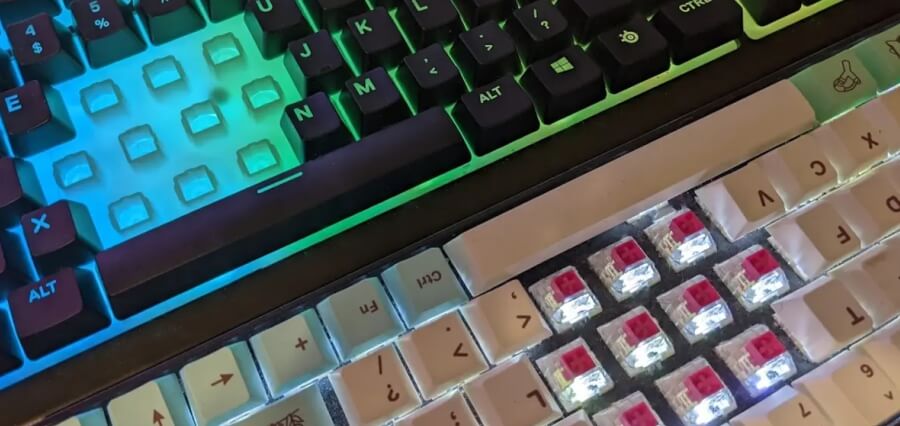Comprehending the Functionality of Membrane Layer Switches Over for Customer Interface Devices
The functionality of membrane layer switches over stands for a substantial innovation in individual interface style, combining efficiency with aesthetic flexibility. These switches operate through a multi-layered structure that equates customer communications right into electric signals, allowing for both compact layouts and resilience against ecological aspects. As markets progressively prioritize individual experience, comprehending the nuances of membrane layer button technology comes to be crucial. What effects do these developments hold for future applications, and how might they redefine customer interactions across different devices?
What Are Membrane Layer Switches?
Membrane buttons are cutting-edge user interface tools that help with individual communication with digital tools. These flexible parts contain numerous layers, including a visuals overlay, spacer, and a published circuit layer. The layout allows for a smooth integration into different electronic devices, improving both the visual and functional elements of interface.
Membrane switches are typically employed in a large range of applications, from family appliances to commercial machinery and medical gadgets. Their building generally features a thin account, making them a perfect option for small designs. The responsive feedback offered by these switches can be crafted to satisfy certain customer choices, making sure efficient communication between the customer and the tool.
Toughness is another considerable advantage of membrane layer buttons, as they are resistant to dirt, wetness, and chemicals, which improves their lifespan in requiring atmospheres. Additionally, these buttons can be personalized in terms of form, size, and graphic layout, enabling branding and user-specific functions. In general, membrane layer changes represent a useful solution for boosting individual experience in electronic tools, combining performance with aesthetic charm in an efficient fashion.
How Membrane Layer Switches Work
Operating on an uncomplicated principle, membrane layer switches make use of a layered building and construction to register user input properly. Each switch consists of multiple layers, including a published circuit layer, a spacer layer, and a leading graphic layer, which are made to collaborate perfectly. When a customer presses the leading layer, it presses the spacer layer, bringing the conductive elements of the circuit layer right into call with each other.
This contact develops a closed circuit, signifying the device to implement a certain function. The design permits different configurations, consisting of tactile comments, which can enhance the user experience by giving a physical experience upon activation. The products used in membrane layer switches often include versatile substratums, such as polyester or polycarbonate, which ensure toughness and strength against wear and tear.

Trick Advantages of Membrane Layer Buttons

Another substantial benefit is their compactness. Membrane layer switches are slim and lightweight, which enables makers to save room in their gadgets without sacrificing capability. This function is particularly imp source valuable in applications where weight and volume are critical factors to consider.
Additionally, membrane layer switches are immune to dust, dampness, and chemicals, improving their durability. This resilience prolongs their lifespan and minimizes the need for constant replacements, leading to cost financial savings in time.
In addition, the tactile feedback given by membrane layer switches can be maximized to enhance user interaction. They can include attributes such as increased buttons or distinct clicks, improving use and individual experience.
Applications Throughout Industries
Customer user interface gadgets utilizing membrane buttons are prevalent in a vast array of markets, showcasing their flexibility and functionality. Membrane Switch. In the medical market, membrane layer switches are important to tools such as analysis equipment and client tracking systems, where their resilience and simplicity of cleansing are critical for maintaining hygiene standards. Likewise, in the vehicle sector, these buttons are used in control panel controls and infotainment systems, providing a smooth and contemporary user interface for customers.
Furthermore, the consumer electronic devices field take advantage of membrane switches in appliances and handheld gadgets, where portable layout and straightforward user interfaces boost customer experience. Industrial applications additionally utilize membrane layer switches over for control board in equipment and automation systems, emphasizing their robustness and resistance to rough settings.
In the aerospace and defense industries, membrane switches are utilized in cockpit controls and equipment, where reliability and efficiency under severe problems are vital. In addition, the video gaming industry significantly includes membrane layer switches in controllers and arcade machines, adding to an appealing individual experience. Overall, the flexibility of membrane switches allows their extensive use throughout countless markets, highlighting their importance in contemporary interface design.
Future Fads in Membrane Layer Switch Over Modern Technology

Furthermore, making use of advanced materials, such as polycarbonate and polyester movies, is anticipated to climb, offering improved durability and resistance to environmental stressors. These products add browse around this site to the total longevity of membrane switches, making them appropriate for harsher commercial applications.
In addition, the consolidation of wise modern technology, consisting of IoT connectivity, will enable membrane switches to interact with various other gadgets and systems, promoting a more interactive user experience. This pattern straightens with the expanding need for smart gadgets throughout various markets, from healthcare to customer electronic devices.
Lastly, personalization alternatives are anticipated to broaden, permitting producers to produce bespoke options customized to specific user demands and preferences. These advancements will certainly place membrane layer switches as vital parts in the evolution of interface innovation.
Verdict
Finally, membrane layer changes stand for a critical improvement in interface technology, providing a trusted and functional remedy for diverse digital applications. Their layered construction promotes small design, while attributes such as responsive feedback boost individual interaction. The longevity against environmental variables even more solidifies their energy across numerous industries. As innovations in product science and touch sensing modern technologies continue, the capability and applicability of membrane buttons are anticipated to expand, enhancing their value in contemporary electronic tools.